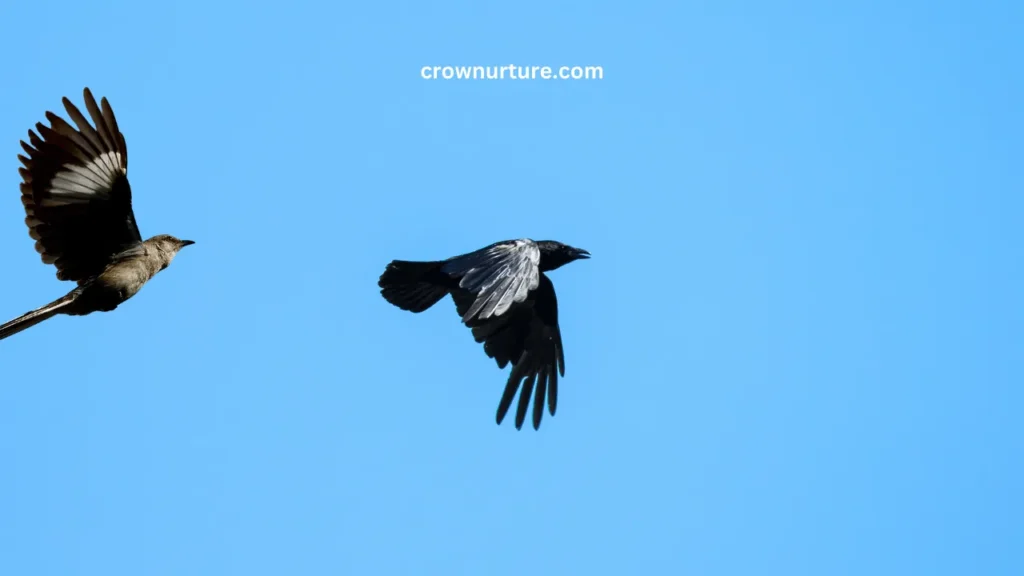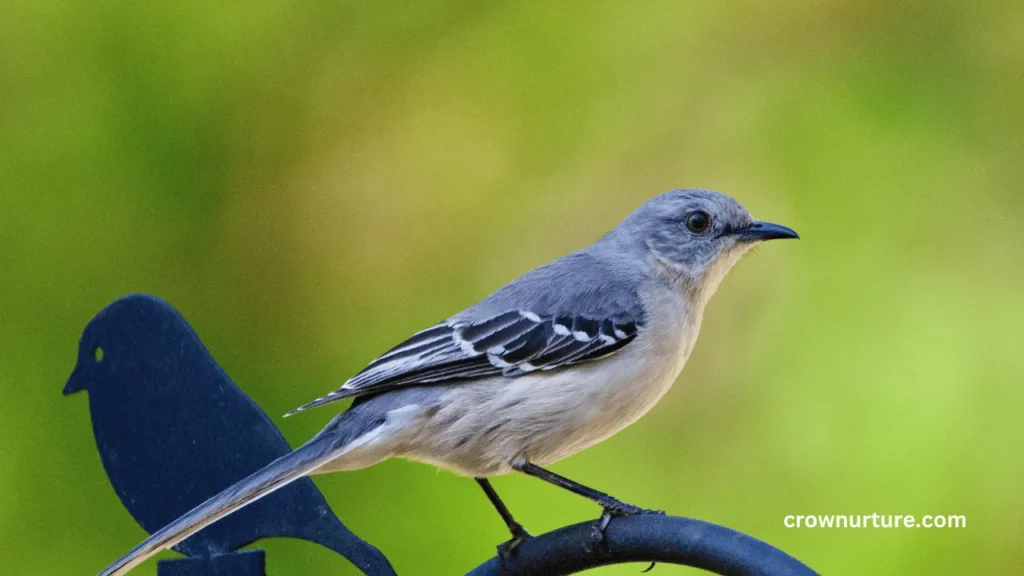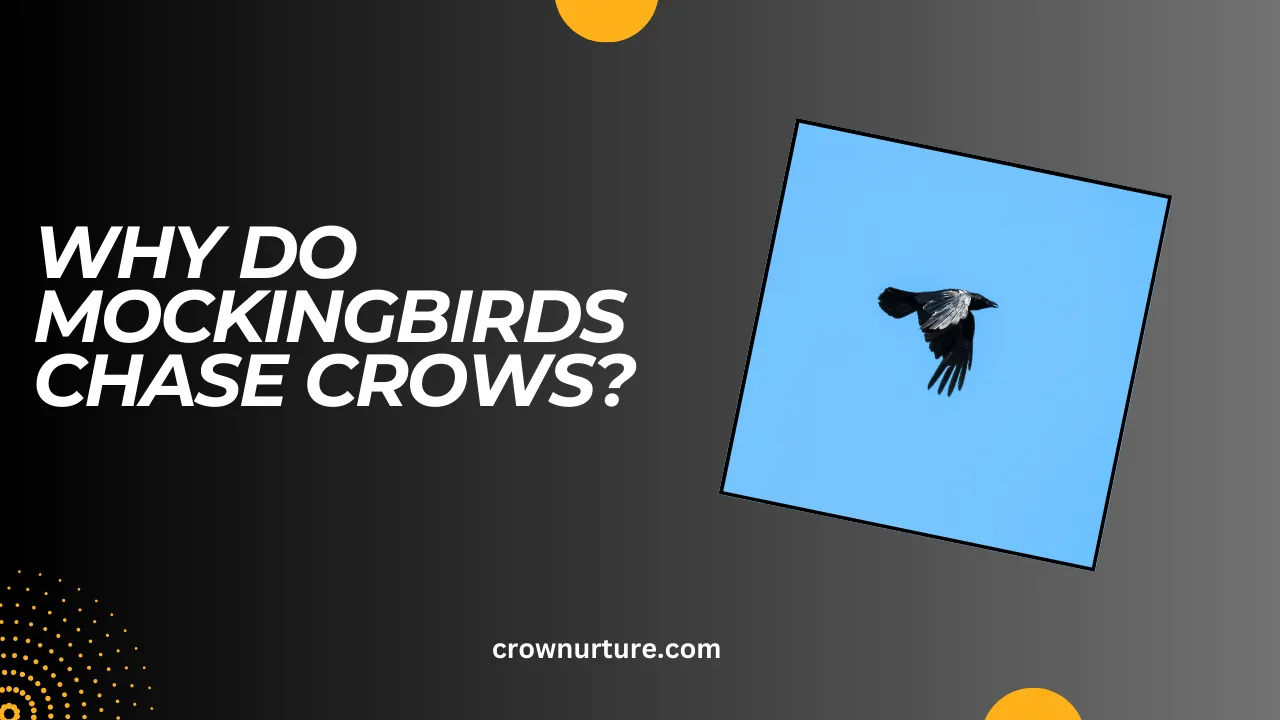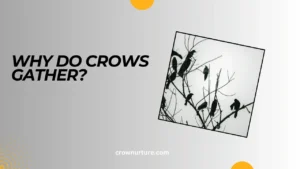Have you ever witnessed a small, determined mockingbird dive-bombing a much larger crow with surprising ferocity? This seemingly brave behavior often raises the question: why would a bird of such modest size challenge one of the most intelligent and dominant species in the bird world?
To the casual observer, it might seem like an unwarranted attack, but the truth is far more fascinating.Mockingbirds are fiercely territorial creatures, and their interactions with crows are primarily driven by the need to protect their nests, young, and resources.
These aerial chases are not random acts of aggression but carefully orchestrated strategies for survival. Understanding why mockingbirds engage in such intense confrontations reveals a lot about their behavior and their role in the broader ecosystem.
In this article, we will explore the territorial nature of mockingbirds, their view of crows as threats, the defensive strategies they employ, and the ecological impact of these dramatic showdowns.
By the end, you’ll have a deeper understanding of the complex dynamics between these two species and the fascinating world of bird behavior.

Contents
- 1 1. Territoriality and Aggression in Mockingbirds
- 2 2. Crows as Perceived Threats
- 3 3. Strategies Employed by Mockingbirds to Chase Away Crows
- 4 4. Ecological Implications
- 5 Conclusion
- 6 FAQs
- 6.1 1. Why do mockingbirds chase crows?
- 6.2 2. Do crows pose a direct threat to mockingbirds?
- 6.3 3. What other strategies do mockingbirds use to protect their nests?
- 6.4 4. Are all bird species that chase crows as aggressive as mockingbirds?
- 6.5 5. How do mockingbirds communicate with each other during these confrontations?
- 6.6 6. Do crows ever fight back against mockingbirds?
1. Territoriality and Aggression in Mockingbirds
Mockingbirds are highly territorial, especially during breeding seasons when they are most protective of their nests and young. These birds defend their territories with great vigor, often engaging in aggressive displays to ward off potential intruders.
Their territorial defense goes beyond simple warning calls; mockingbirds employ various forms of aggression, from loud vocalizations to physical attacks. These aggressive behaviors are key to ensuring that no other birds encroach on their valuable resources.
During the breeding season, aggression peaks. Mockingbirds, in particular, become relentless defenders, viewing any potential threat—whether a crow or another bird—as a direct danger to their offspring and territory.
2. Crows as Perceived Threats
Crows are not the primary predators of mockingbirds, but they do pose a risk. Crows occasionally prey on smaller birds’ nests, including those of mockingbirds, making them a significant threat to their young.
Another issue is competition for resources. Both crows and mockingbirds are opportunistic feeders, relying on fruits, seeds, and insects. In areas where resources are scarce, competition between these two species can become more pronounced, leading to confrontations.
Territorial overlap is another factor that brings mockingbirds and crows into direct conflict. As the two species inhabit similar environments, the chances of encountering one another increase, which often leads to aggressive encounters.

3. Strategies Employed by Mockingbirds to Chase Away Crows
Mockingbirds are known for their aerial attacks. They dive, swoop, and perform complex maneuvers in midair to confuse and harass crows, often forcing them to retreat.
In addition to aerial tactics, mockingbirds use vocalizations to warn others of danger. Their loud and distinctive calls not only alert fellow mockingbirds but can also serve to intimidate a larger predator like a crow.
Often, mobbing behavior takes place, where multiple mockingbirds team up to chase a crow away. This coordinated effort increases their chances of success, overwhelming the larger bird with their relentless pursuit.
4. Ecological Implications
The interactions between mockingbirds and crows play a significant role in maintaining the ecological balance. By defending their territories and nests from crows, mockingbirds help regulate predator populations and protect smaller bird species.
Mockingbirds’ aggressive behavior may also impact other species within the same habitat. While their focus is on crows, the general tone of hostility can disrupt the dynamics of the broader bird community.
Understanding these interactions is vital for conservation efforts. By recognizing the complex relationships between species, wildlife managers can better understand how to preserve healthy ecosystems and support bird populations.
Conclusion
Mockingbirds chase crows primarily as a defense mechanism, driven by a deep instinct to protect their territory, young, and resources. These remarkable birds use a combination of aerial aggression, vocalizations, and mobbing tactics to ward off the perceived threat of crows, showcasing their territorial and protective nature.
These interactions not only provide insight into the daily lives of mockingbirds but also highlight the fascinating dynamics between different species. Understanding how birds like mockingbirds behave in the wild enriches our appreciation for the complex ecological web that sustains life.
The next time you see a mockingbird chasing a crow, remember that it’s not just a battle of size, but a clash of instincts, survival, and ecological significance. In the world of birds, every chase tells a story.
FAQs
1. Why do mockingbirds chase crows?
Mockingbirds chase crows primarily to defend their territory and protect their nests from perceived threats.
2. Do crows pose a direct threat to mockingbirds?
Crows may occasionally prey on the eggs or nestlings of smaller birds, including mockingbirds, making them a potential threat.
3. What other strategies do mockingbirds use to protect their nests?
In addition to chasing, mockingbirds use loud vocalizations and physical displays to deter predators and defend their territory.
4. Are all bird species that chase crows as aggressive as mockingbirds?
While some species may exhibit aggressive behavior, mockingbirds are particularly territorial and defensive, especially during the breeding season.
5. How do mockingbirds communicate with each other during these confrontations?
Mockingbirds use alarm calls and distinctive vocalizations to alert other birds of the presence of a threat, coordinating their defensive efforts.
6. Do crows ever fight back against mockingbirds?
Crows may defend themselves, but their size and intelligence usually allow them to evade the relentless pursuit of mockingbirds.








